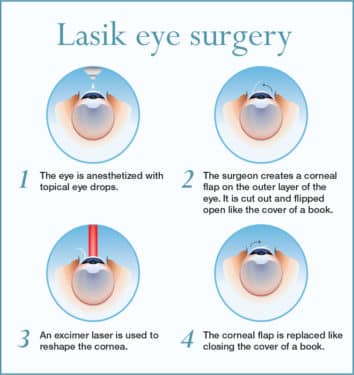Examining The Advantages And Disadvantages Of Conventional Cataract Surgical Procedure Versus Laser-Assisted Techniques
Examining The Advantages And Disadvantages Of Conventional Cataract Surgical Procedure Versus Laser-Assisted Techniques
Blog Article
Write-Up By-McGraw Christensen
When contemplating the choice in between conventional cataract surgical procedure and laser-assisted strategies, you might find yourself evaluating the benefits and disadvantages each method uses. The choice surpasses the surface area level of expense and precision, delving into the realm of long-term results and client satisfaction. As you browse with the intricacies of these two techniques, it comes to be important to recognize the nuanced information that can substantially impact your aesthetic quality and general experience. Stay tuned to reveal the vital aspects that will certainly guide your decision-making procedure in this essential aspect of eye care.
Typical Cataract Surgical Treatment Benefits And Drawbacks
When considering traditional cataract surgical treatment, you might discover that it's a well-established and widely-used strategy. In this procedure, a doctor makes a small laceration in the eye and utilizes ultrasound to separate the gloomy lens before removing it. As soon as the cataract is removed, a man-made lens is placed to recover clear vision.
Among the major advantages of conventional cataract surgical procedure is its performance history of success. Lots of clients have actually had their vision dramatically enhanced through this procedure. Furthermore, conventional surgical treatment is typically covered by insurance coverage, making it an extra easily accessible alternative for several individuals.
Nevertheless, there are some drawbacks to conventional cataract surgery too. Recuperation time can be much longer contrasted to newer methods, and there's a slightly higher risk of issues such as infection or swelling. Some clients may also experience astigmatism or require reading glasses post-surgery.
Laser-Assisted Techniques Pros and Cons
Discovering laser-assisted strategies for cataract surgery introduces a modern-day strategy that makes use of laser technology to do key steps in the treatment. Among the primary advantages of laser-assisted cataract surgery is its precision. The laser enables extremely precise incisions, which can lead to much better visual results. Additionally, making use of lasers can lower the quantity of ultrasound power required during the surgery, possibly lowering the danger of problems such as corneal damage.
On the drawback, laser-assisted strategies can be more pricey contrasted to traditional techniques. This cost mightn't be covered by insurance policy, making it much less easily accessible to some clients.
Another consideration is that not all cataract doctors are trained in laser technology, which can restrict your options for picking a doctor.
Finally, while the laser can automate particular facets of the procedure, the surgical procedure still needs a knowledgeable doctor to make sure effective results.
Comparative Evaluation of Both Techniques
For a thorough understanding of cataract surgical treatment techniques, it's vital to perform a comparative analysis of both conventional and laser-assisted methods.
Standard cataract surgery includes hand-operated cuts and making use of portable devices to separate and get rid of the over cast lens.
On the other hand, laser-assisted cataract surgery makes use of innovative modern technology to create accurate cuts and separate the cataract with laser power before removing it.
In terms of accuracy, laser-assisted techniques provide a higher level of accuracy contrasted to typical techniques. The use of lasers allows for customization of the procedure based on each client's eye anatomy, potentially leading to much better aesthetic results.
Nevertheless, laser-assisted cataract surgery has a tendency to be much more expensive than typical surgical treatment, which may limit ease of access for some patients.
While both methods work in bring back vision impaired by cataracts, the option in between traditional and laser-assisted methods often relies on variables such as price, accuracy, and specific client demands.
Consulting with your eye doctor can assist establish the most suitable method for your cataract surgery.
Conclusion
In conclusion, when determining between typical cataract surgical treatment and laser-assisted techniques, take into consideration elements like cost, precision, and individual requirements. Traditional surgical procedure offers a proven record and insurance policy protection yet may come with longer healing times. Laser-assisted strategies provide greater accuracy and customization but can be a lot more expensive and not always covered by insurance. Ultimately, the choice in between the two methods relies on what is most important to you and your particular situation.
